
Score breakdown
Things we like
- Dramatic improvement to ride
- Handles towing with ease
- Way better ground clearance
Not so much
- A little bit pricey for a lift kit
- Makes it harder to get in and out!
- V6 still only available in high grades
We're well familiar now with the second-generation Volkswagen Amarok in stock guise, but now we've had a chance to drive it on and off road, and tow, with a factory-backed accessory: an Old Man Emu suspension lift kit from ARB.
| VW Amarok V6 Style specifications | |
|---|---|
| Powertrain | 3.0-litre turbo-diesel V6 |
| Max power | 184kW |
| Max torque | 600Nm |
| Drivetrain | 10-speed auto, permanent four-wheel drive |
| Fuel consumption | 8.4 litres per 100km |
| Price | from $73,740 plus on-road costs (and accessories!) |

JUMP AHEAD
Pricing and features
The lift-kit setup for the Amarok is the product of off-road modification experts ARB, and there are two versions you can choose from.
The first is the standard 40mm lift kit, which includes front and rear lifted suspension with the new shocks bumping ground clearance from 235mm to 275mm. The same lift is also available in a more hardcore heavy duty setup with the front suspension adjustments designed for the V6 diesel engine and/or a bullbar, while the rear can be specced with a 300kg constant loading.
Expect to add about $3800 to $4000 to your invoice for the kit, and you’ll get VW’s five-year/unlimited kilometre warranty cover for the vehicle, and the suspension has the same cover if fitted pre-delivery.

On-road driving
I wouldn’t say I don’t like the way the standard Amarok drives, but I certainly think the lift kit makes it an even better thing to handle in a mix of scenarios.
The V6 model I tested exhibited a very impressive ride and a more precise feel to the steering because, seemingly, some of the nose-heavy feeling has been counteracted.
It feels a sweeter steering thing in twisty roads, and less cumbersome for low-speed manoeuvres, too, thanks to the front-end having just a bit less of a lumpy feel.
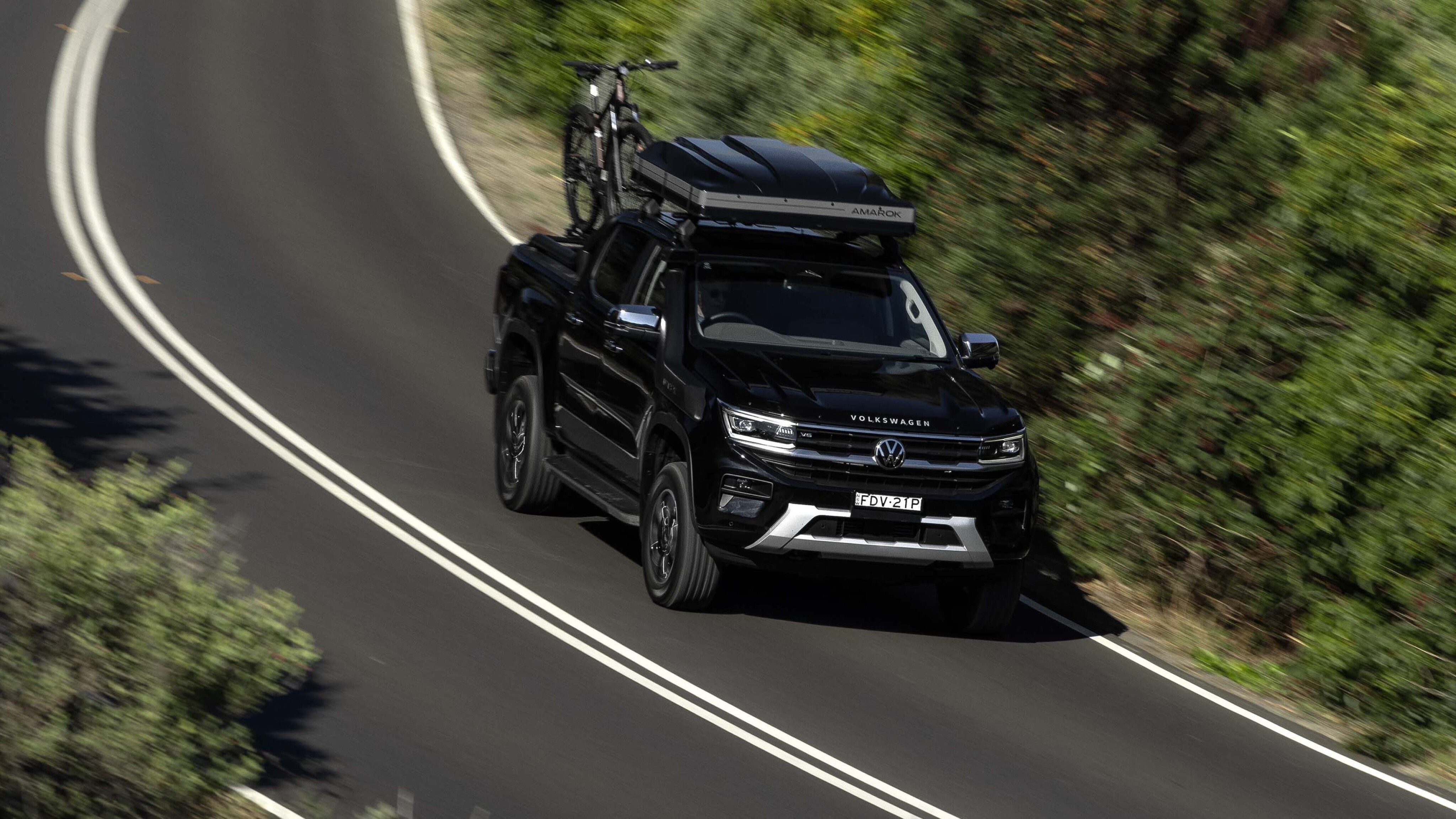
There was less constant rear-end pitter-patter on country roads, and a more sorted on-road driving experience generally. And it was unladen, too.
For context, I also drove a non-lifted example on this event, and to me there was a significant improvement to comfort levels in the lifted rig.
There’s a slight penalty to pay for the higher ride height – it’s harder to clamber in and out of, and there’s maybe a smidge more drama when you hit a very large pothole or bump at pace – but on balance, it’s money well spent.
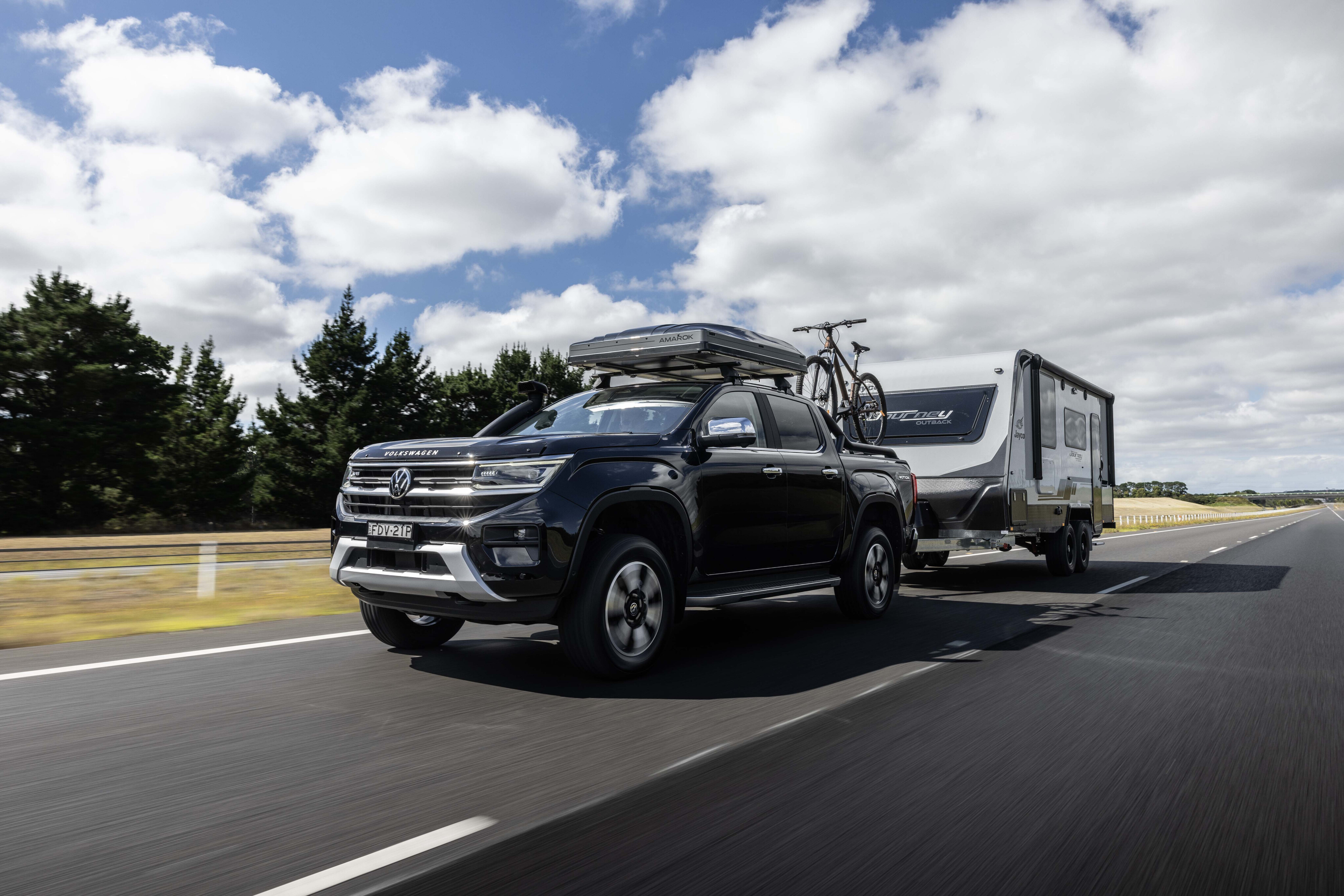
Towing test
The big test with towing is whether the back of the ute sags dramatically, leading to the nose pointing skyward and less precision for the driver.
However, the suspension of the Amarok offered a surprisingly level drive, considering it had a 3100kg Jayco Outback caravan on the back.
For this task, the V6 version is the pick – extra power and torque, and permanent four-wheel-drive – and it’s heavier, which makes for a confident tow. I drove a four-cylinder without a lift-kit for comparative purposes, and it felt more prone to nose-tail bouncing. Not the case in the V6 with lift kit.
Also, the tech is terrific – all grades come with a standard electronic brake controller, tow bar, and configurable settings for multiple trailers, and a DIY trailer connection checklist and trailer light check.
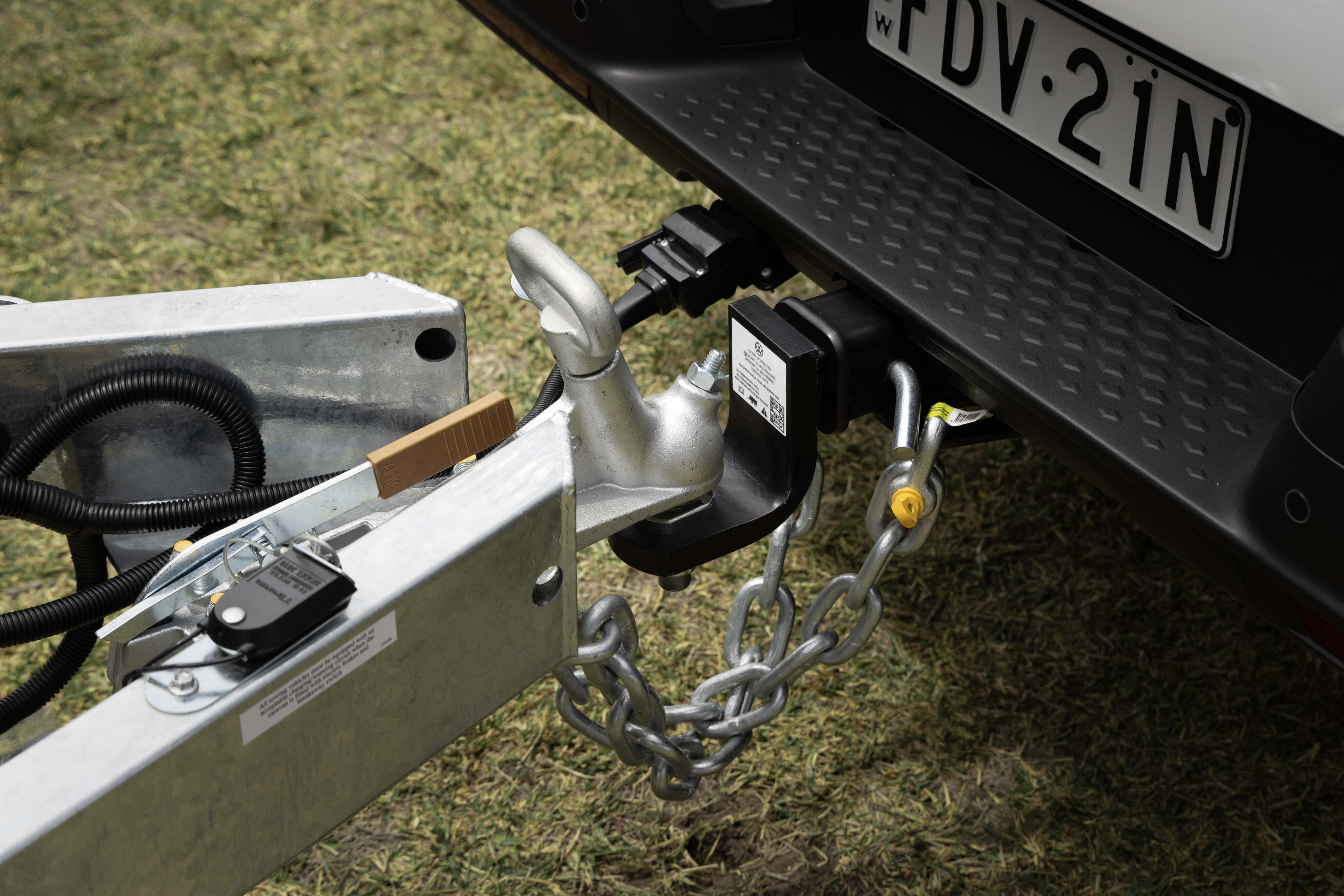
Off-road
There are some steep and unrelentingly tough tracks in Toolangi State Forest, about an hour outside Melbourne.
And as we approached a climb that would have seen a stock Amarok about-face and retreat, we instead pushed on, with a 300m elevation from the base of the hill to the top ensuring some treacherous testing.
What surprised me, though, was when MotoKinetic instructor, Renato Loberto, said we’re leaving it in 4A.

“You’re kidding, right?” I said, as I fought to overcome my instinct to put it in low-range and lock the rear diff. That seemed like the logical approach, given the rutted mess of a track ahead, which included some cantankerous tree roots that promised to make smooth progress a challenge.
Oh, and stock tyre pressures, too…
No issues with clearance at the front bumper, though, with the lifted ‘Rok easily meandering over the top of the root with a bit of encouragement with the throttle, and the 4Motion system apportioned torque to the tyre with the most traction – the one that was buried in a rut, with just a few centimetres between panel damage and glory.
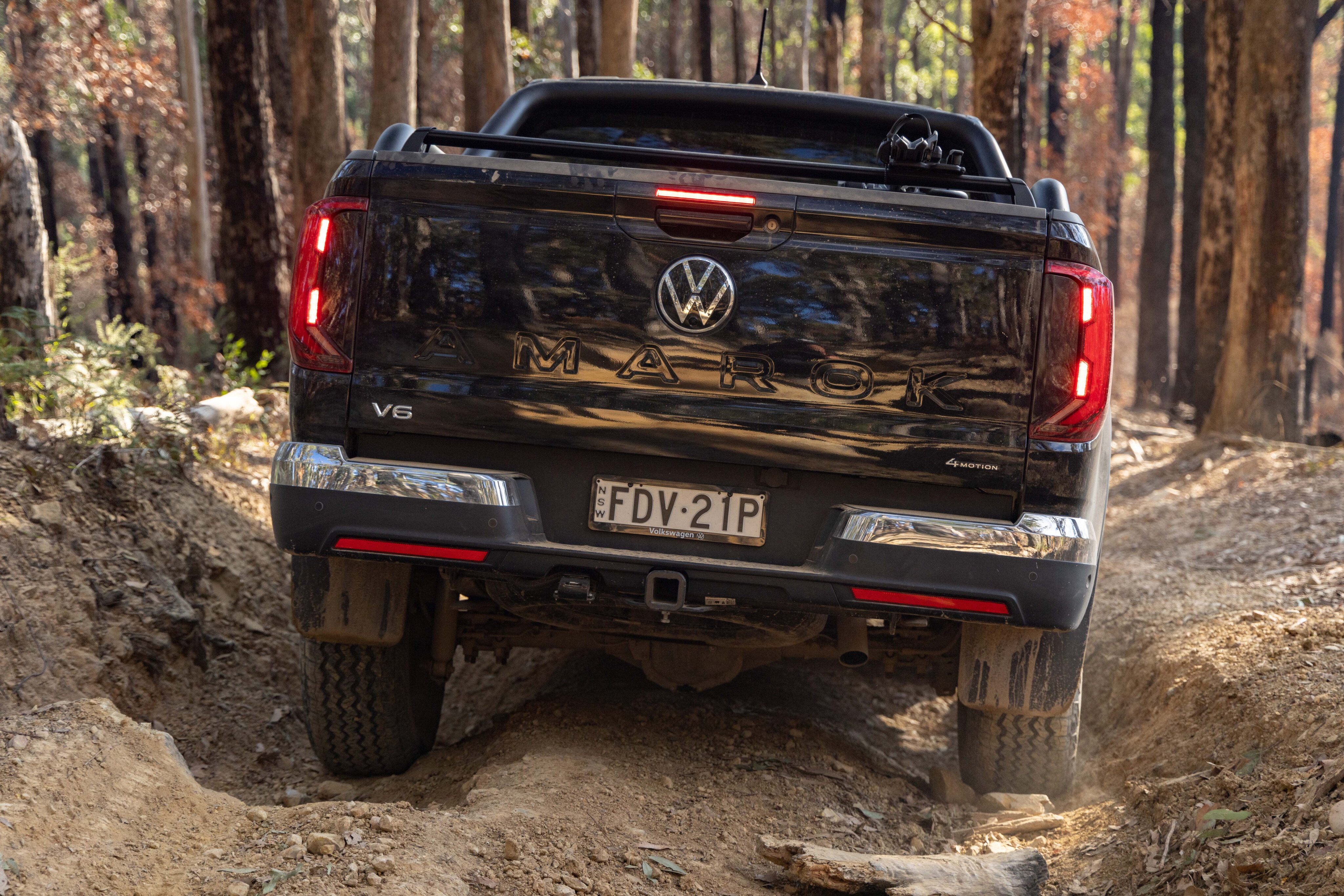
But not even the low-hanging side steps, let alone the undercarriage, copped a hiding, thanks to the additional clearance.
Excellent axle articulation ensured that when direction changes were necessary, there was no fear of beaching the machine on the middle of the track, and considering the ‘otherwise stock’ fitout, I was seriously impressed at how easy it was.
While the V6 takes a bit of driving to get it huffing up steeper bits in 4A, low range would have allowed it to lumber up, basically at idle. Still, a test worth doing.
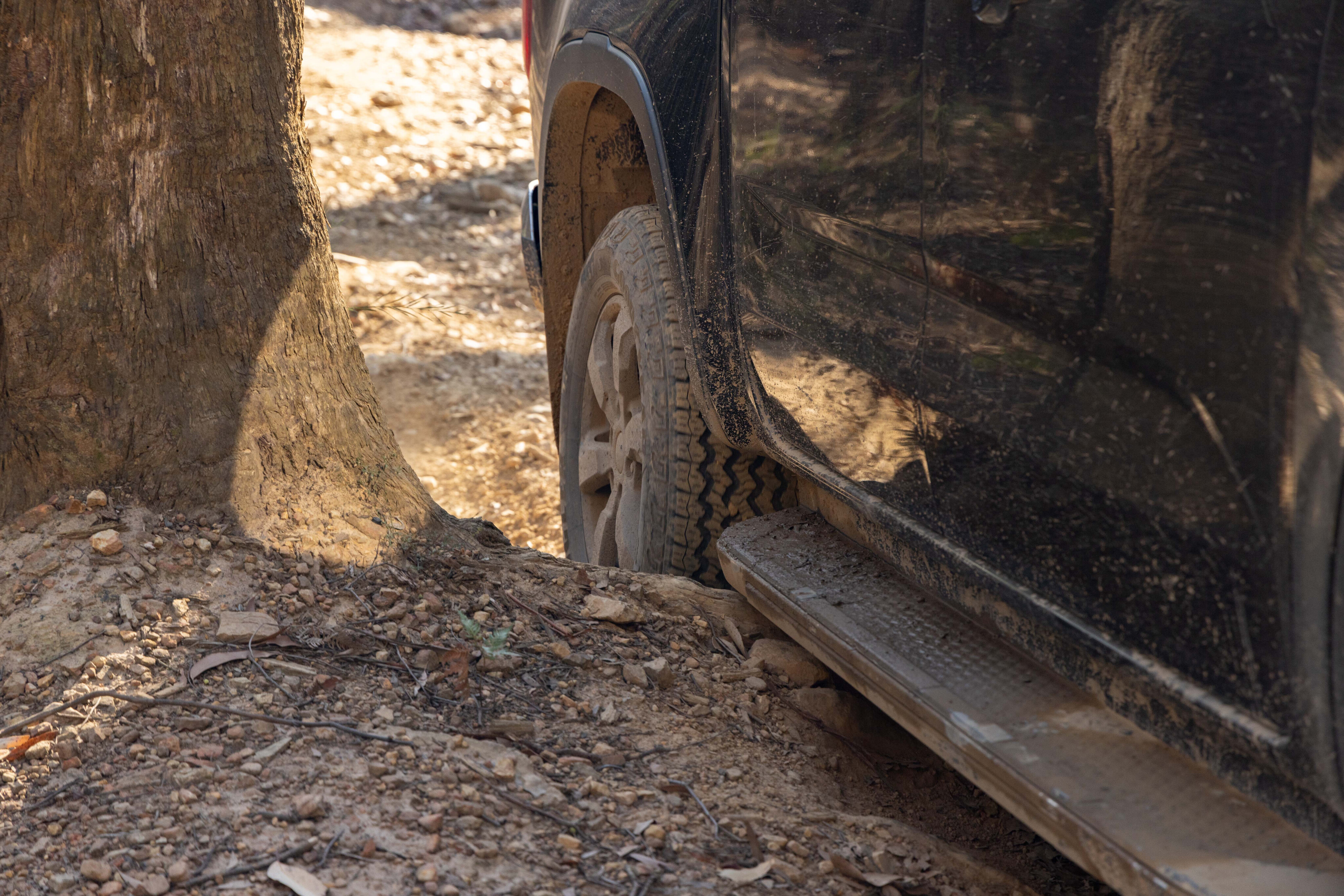
Key rivals
You could choose any number of the other utes. The related Ford Ranger is the only other one that comes with a V6 diesel (starting from a lower price!), but you can’t option it directly with a lift kit.
Australia has a diverse aftermarket for accessories, and you might find what you want by shopping around.
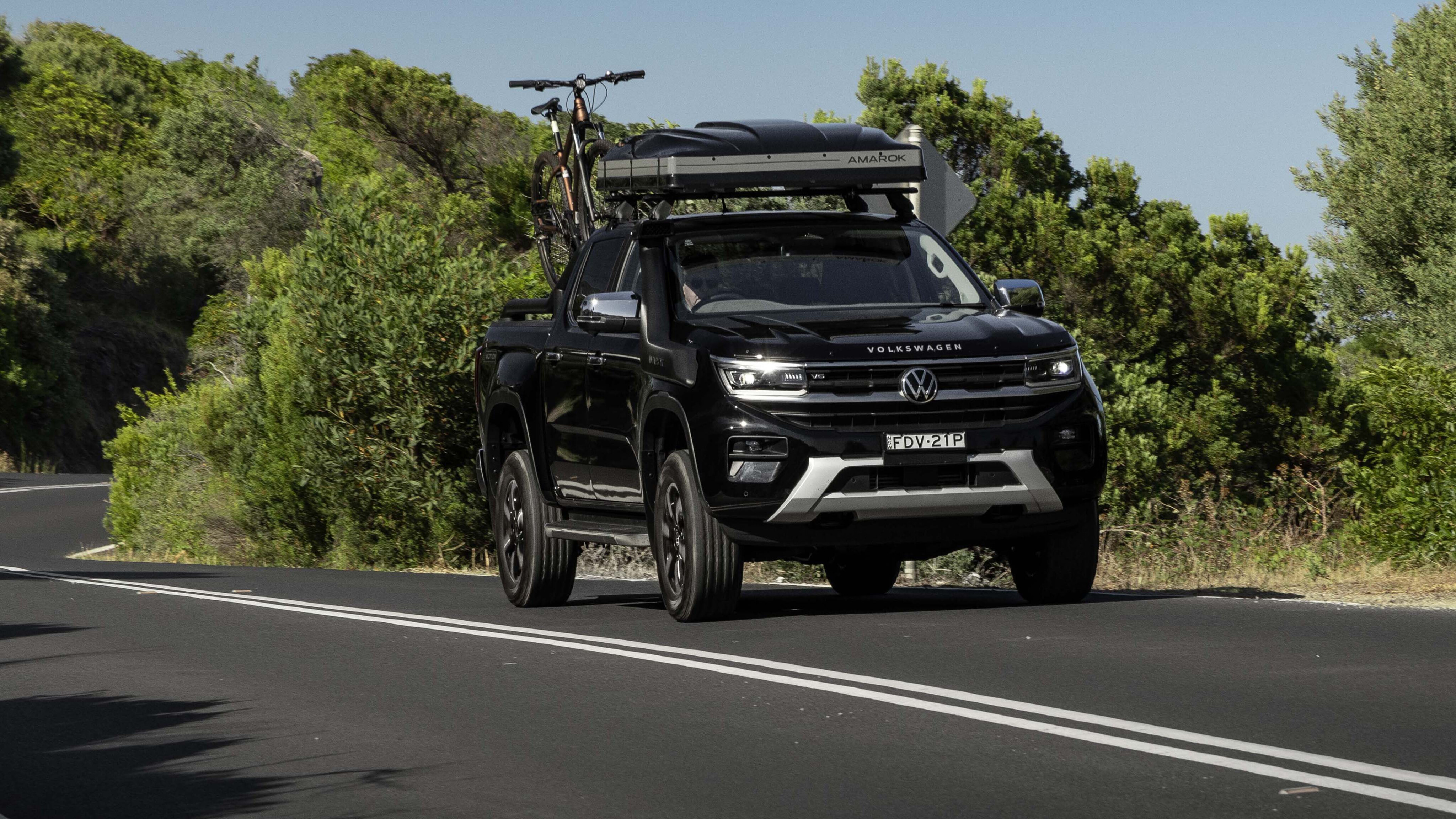
Should I put it on my shortlist?
If you want a V6 diesel ute, it’s one of only two available. And while it might be a tall asking price, you’re getting a high-grade ute experience, and with the lift kit fitted you’re also getting a lofty drive experience, too.
Score breakdown
Things we like
- Dramatic improvement to ride
- Handles towing with ease
- Way better ground clearance
Not so much
- A little bit pricey for a lift kit
- Makes it harder to get in and out!
- V6 still only available in high grades

COMMENTS